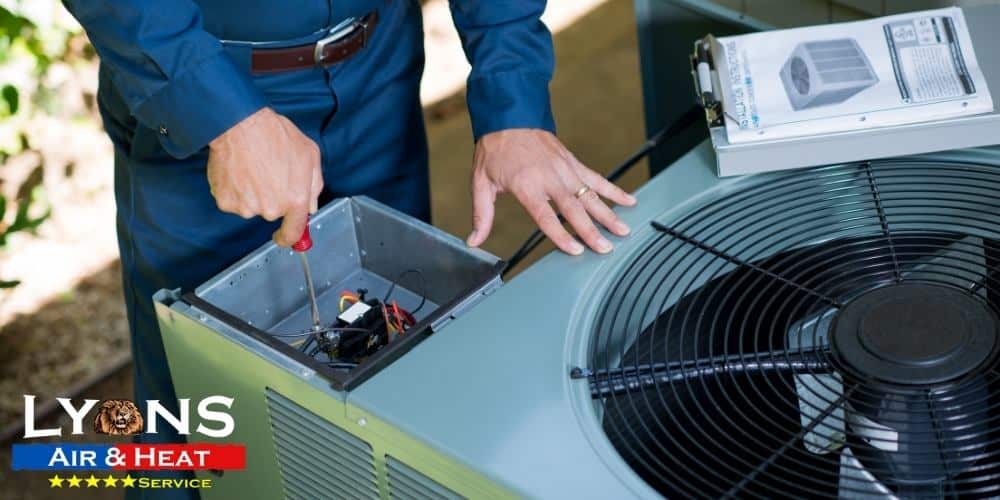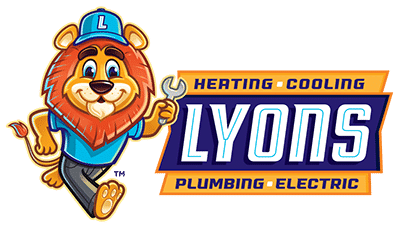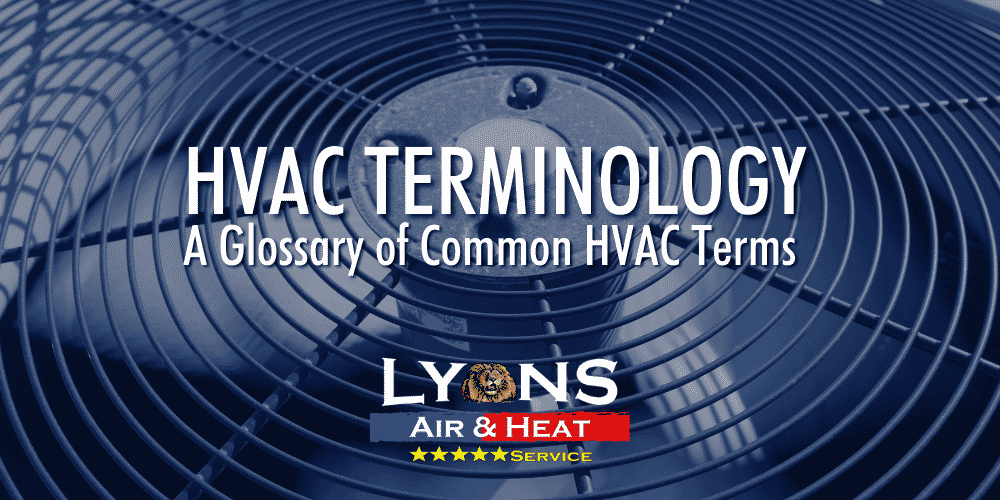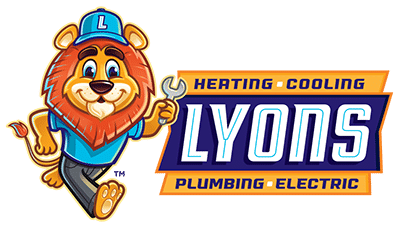Glossary of Common HVAC Terms
If you’ve ever had a Rockwall HVAC technician come into your home to inspect, repair, or replace your HVAC system, you may have felt like they were speaking in a foreign language. It helps to know what exactly is being discussed with you so you can make informed decisions about the heating, ventilation, and air conditioning equipment and services you are paying for. That’s why our experienced Rockwall HVAC technicians from Lyons Air & Heat are here to give the run-down on HVAC vocabulary.
ACH
Air Changes per Hour. The number of times air is distributed or removed in a room per hour via mechanical and natural ventilation.
AFUE
Annual Fuel Utilization Efficiency. Indicated as a percentage, your furnace’s AFUE tells you how much energy is being converted to heat. For example: an AFUE of 90 means that 90% of the fuel is being used to warm your home, while the other 10% escapes as exhaust with the combustion gases.
Advanced Reciprocating Compressor
A type of compressor that uses a more efficient process for compressing refrigerant for better cooling efficiency.
AeroQuiet System
Bryant’s AeroQuiet System includes sound-deadening features in the cabinet, fan system, and top for better airflow, lower noise, and better efficiency in your system.
Air Handler
The portion of your air conditioning system or heating system that forces air through your home’s ductwork, usually located in the attic or in a closet.
Barometer
A type of instrument used to measure atmospheric pressure.
BTU
British Thermal Unit. Used for both heating and cooling, BTU is a measure of the heat flow given off when fuel is combusted. Or for cooling, it’s a measure of heat extracted from your home. (One BTU is approximately equal to the heat given off by a wooden kitchen match.)
BTUH
British Thermal Units per Hour. A British Thermal Unit (BTU) is the unit of heat required to raise 1 pound of water by 1 degree Fahrenheit.
Beckett Burner
A burner assembly within your oil furnace, manufactured by Beckett to exact specifications of Carrier. This burner provides good combustion of heating oil.
CFM
Cubic Feet per Minute. A measurement of airflow that indicates how many cubic feet of air pass by a stationary point in one minute. The higher the number, the more air is being forced through the air conditioning system.
Capacity
The ability of heating or cooling systems to heat or cool a given amount of space. For heating, this is usually expressed in BTUs. For cooling, it is usually given in tons.
Carbon Monoxide
A colorless, odorless, highly poisonous gas produced when carbon-based fuels, such as natural gas, burn without sufficient air nearby. Regular yearly HVAC maintenance is highly recommended to make sure your furnace is safe to operate.
Check-Flo-Rater
The patented Check-Flo-Rater metering device accurately controls refrigerant flow to ensure precise air conditioning system operation, efficiency, and performance.
Chiller
A device that removes heat from liquid coolant through an absorption refrigeration cycle or vapor-compression.
Compressor
Part of the heat pump or air conditioner unit that controls the pressure applied to the refrigerant, necessary for taking in heat to warm your home or getting rid of heat to keep your home cool. Sometimes considered the heart of your central air conditioning and heating system.
Condenser Coil
Part of the outdoor portion of a split-system air conditioner or heat pump. By converting refrigerant that is in a gas form back to a liquid, the condensor coil sends heat carried by the refrigerant to the outside. Also referred to as an outdoor coil. Yearly maintenance and cleaning of this coil are highly recommended.
CAV
Constant Air Volume. A system that distributes a constant air flow at varying temperatures to produce hot or cool air. Opposite of Variable Air Volume Systems.
CDU
Condensing Unit. Outdoor HVAC unit that condensing refrigerant from its gaseous state to a liquid.
Continuous Fan Switch
A feature on an oil furnace allowing the furnace’s fan to blow continuously to improve system efficiency and maintain even temperatures.
dB
Decibels (dB) are a unit measuring the intensity of noise.
Damper
A type of valve used in duct work that opens or closes to control airflow. Used in zoning to control the amount of warm or cold air flow entering certain areas of your home.
Dehumidifier
A dehumidifier is an appliance that works to remove moisture from the air by condensing it back into water and catching it. In addition to reducing the humidity in your home, it also helps reduce odors of mildew or bacteria and improves overall indoor air quality.
Downflow
A type of furnace that takes cool air from the top and blows warm air to the bottom. Common where your furnace must be located in a second-floor closet or utility area.
Ductwork
Hollow pipes used to transfer air from the air handling unit to the air vents throughout your home. The importance of ductwork as a component of your home heating and cooling system should never be underestimated. At Lyons, we are happy to provide Rockwall duct installation services.
DuraGuard
DuraGuard™ is a Bryant innovation that protects an outdoor heating or cooling system from weather and increases durability.
EER
Energy Efficiency Ratings (EER) measure the efficiency with which a product uses energy to function. It is calculated by dividing a product’s BTU output by its wattage.
Electronic Air Cleaner (EAC)
An electronic device that filters out large particles and contaminants in indoor air. It then electronically pulls out tiny particles that have been magnetized, such as viruses and bacteria, drawing them to a collector plate and overall improving your indoor air quality.
Energy Saver Switch
An energy-saver switch causes the air conditioner’s fan and compressor to cycle on and off together, reducing energy use.
Energy Star
Energy Star is a government-backed program helping businesses and individuals protect the environment through promoting energy-efficient systems. Products with the Energy Star rating will be efficient and save costs on energy bills.
Evaporator Coil
Part of split-system air conditioners or heat pumps located indoors. The evaporator coil cools and dehumidifies the air by converting liquid refrigerant into a gas, which is used to absorb heat from the air. The warmed refrigerant is then carried through a tube to the outdoor unit (condenser coil). Also referred to as an indoor coil. It is recommended to have this indoor coil cleaned or checked every 2 – 4 years by a licensed HVAC contractor to ensure proper airflow.
Exhaust Air
Air that is purposely drawn out of a building ventilation system via an exhaust fan. Helps eliminate poor air quality.
Fan Coil
An indoor component of a heat pump system, used in place of a furnace, to provide additional heating on cold days when the heat pump does not provide adequate heating.
Fan On Plus
Fan On Plus™ improves comfort all year long by allowing you to select different fan speeds during continuous fan operation to achieve more or less airflow as needed.
Gas Furnace Heat Exchanger
A small metal shield that sits between the combustion chamber and the blower, essentially creating a passageway to transfer heat from the furnace and into the air ducts of your home or building.
Guage Pressure
Air pressure measured using atmospheric pressure as a base.
HSPF
The Heating Seasonal Performance Factor is a measure of the heating efficiency of a heat pump. The higher the HSPF number, the more efficiently the heat pump heats your home.
HVAC
Term used for Heating, Ventilation, and Air Conditioning.
Heat Exchanger
The part of a furnace responsible for heat transfer to nearby air. That air is then distributed through the ductwork throughout your home.
Heat Pump
A heating and air conditioning unit that heats or cools by moving heat.
Heat Pump Compressor
A part of an outdoor heat pump or cooling unit that works to compress and pump refrigerant to cool a home or building.
Heating Coil
A wire coil used to heat air or water. Passages of electric currents allow the coil to extract heat and distribute it.
Horizontal Flow
A type of furnace, installed on its “side”, that draws in air from one side, heats it, and sends the warm air out the other side. Most often used for installations in attics or crawl spaces.
HumidiTrac
An automatic programmable control used to maintain humidity at a fixed point.
Humidifier
A humidifier is a piece of equipment that adds water vapor to heated air as it moves out of the furnace. This adds necessary moisture to protect your furnishings and reduce static electricity.
Humidistat
A control used to manually maintain humidity at a fixed point.
IAQ
Indoor Air Quality (IAQ) refers to the cleanliness and health of the air in a home.
Indoor Coil
See Evaporator Coil.
Latent Heat
The heat intensity needed to change physical states (solids into liquids or vapor, or otherwise liquids into vapor) without changing temperature.
Load Estimate
A series of studies performed to determine the heating or cooling requirements of your home. An energy load analysis uses information such as the square footage of your home, window, or door areas, insulation quality, and local climate to determine the heating and cooling capacity needed by your furnace or air, heat pump, or air conditioner. When referring to heating, this is often known as a Heat Loss Analysis, since a home’s heating requirements are determined by the amount of heat lost through the roof, entry ways, and walls.
Low Boy
Low Boy is a type of furnace configuration in which the furnace is lower in height and occupies more floor space.
MERV
The Minimum Efficiency Reporting Value is the standard comparison of the efficiency of an air filter. The MERV rating scale ranges from 1 (least efficient) to 16 (most efficient), and measures a filter’s ability to remove particles from 3 to 10 microns in size.
Matched System
A heating and cooling system comprised of products that have been certified to perform at promised comfort and efficiency levels when used together, and used according to design and engineering specifications.
Multipoise
A multi-direction configuration that allows for both upflow and downflow installations.
Operating Cost
The day-to-day cost of running your home comfort equipment based on energy use. The more energy-efficient your system, the more you save on utility bills.
Outdoor Coil
see Condenser Coil
Payback Analysis
Overall measure of the efficiency and value of your home comfort system. By combining your purchase price and ongoing operating costs, a payback analysis determines the number of years required before monthly energy savings offset the purchase price.
PerfectHeat
PerfectHeat® provides two stages of heating to battle changing winter conditions. At start-up, low-stage heating gently circulates warm, heated air into your living space. As outdoor temperatures become more extreme, high-stage heating provides the extra boost you need to remain comfortable.
PerfectLight
PerfectLight is an advanced gas furnace ignition system that replaces standard pilot lights and improves upon traditional modern igniters used by other manufacturers.
Puron Refrigerant
Puron® refrigerant is an environmentally sound refrigerant designed not to harm the earth’s ozone layer. Federal law requires all manufacturers phase out ozone-depleting refrigerants in the next few years. Puron Refrigerant is approved by the US Environmental Protection Agency as a replacement for Freon 22*.
QuieTech
QuieTech™ is a noise reduction system that provides comfortable heat while generating very little noise in the process.
R-22 refrigerant
R-22 is a single-component HCFC refrigerant with low ozone depletion potential. It has long been used in a variety of air conditioning and refrigeration applications in a variety of markets. Production of R-22 ceased in 2015 per the Montreal Protocol.
Reciprocating Compressor
A type of compressor used in air conditioners that compresses refrigerant by using a type of “piston” action.
Reclaiming
Returning used refrigerant to the manufacturer for disposal or reuse.
Recycling
Removing, cleaning, and reusing refrigerant.
Refrigerant Lines
Two copper lines that connect the condenser coil in the outdoor unit to the evaporator coil in the indoor unit.
Return Duct
A duct that brings temperature-regulated air to the furnace or air handler before returning it to be circulated throughout your home or business.
Riello Burner
A burner assembly within your oil furnace, manufactured by Riello to exact specifications of Carrier. This burner provides a cleaner, higher quality combustion of heating oil to increase energy efficiency.
Saturation Temperature
The temperature required to turn a liquid refrigerant into a vaporous state; essentially the boiling point of refrigerant.
SEER
The Seasonal Energy Efficiency Ratio is a measure of the cooling efficiency of your air conditioner or heat pump. The higher the SEER number, the more efficient the system is at converting electricity into cooling power.
Sensible Heat
The heat energy needed to change the temperature of a substance without changing its physical state.
Scroll Compressor
A specially designed compressor that works in a circular motion instead of an up-and-down piston action.
Serpentuff
Carrier’s exclusive Serpentuff™ Heat Exchangers feature a patented polypropylene laminate so that it extracts nearly all of the heat from the HVAC system and makes the most of the energy used.
Setback Thermostat
A state-of-the-art electronic thermostat with a built-in memory that can be programmed for different temperature settings at different times of the day.
Single Package
One outdoor unit that contains both a heating and cooling system.
SmartRecovery
Smart Recovery starts the air conditioner or heating system in advance to be sure that each zone reaches yourr desired temperature setting at the scheduled time.
Split System
Refers to an air conditioner or heat pump that has components in two locations. Usually, one part of the system is located inside (evaporator coil), and the other is located outside your home (condenser coil).
Subcooling
Also referred to as undercooling. A liquid cooled at a temperature below the boiling point which keeps it from converting into a gaseous state. Saturation temperature – actual liquid refrigerant temperature = subcooling.
Supply Air Temperature
A stable supply air temperature is 55°F.
Thermidistat
The Thermidistat™ Control measures air temperature independently, both inside and outside, as well as indoor humidity, and adjusts HVAC system operation to maintain the temperature and humidity levels set by the homeowner.
Thermostat
Unit that monitors and controls your HVAC system.
Thermostatic Expansion Valve
A thermostatic expansion valve (TXV) is a precision device used to meter the flow of liquid refrigerant entering the evaporator at a rate that matches the amount of refrigerant being boiled off in the evaporator.
Ton
A unit of measure for cooling capacity. One ton = 12,000 BTUs per hour.
Total Home Comfort System
The ultimate solution to providing you with consistent, customized home comfort, despite the ever-changing weather.
TrueSense Dirty Filter Detection
TrueSense™ dirty filter detection reminds you when it’s time to change your media filter.
UL
UL is an objective, non-profit organization that tests and rates electrical products for public safety.
Upflow
A type of furnace that draws cooled air from the bottom and blows the warmed air out of the top and into the duct system. This type of furnace is usually installed in a basement or an out-of-the-way closet.
VAV
Variable Air Volume. A system that distributes varying airflow at a consistent temperature to produce heating or cooling air. Opposite of Constant Air Volume Systems.
Ventilator
A ventilator captures heating or cooling energy from stale indoor air and transfers it to fresh air.
WeatherArmor
WeatherArmor™ is a Carrier innovation that protects an outdoor HVAC unit from weather and increases durability.
Zone Perfect™Plus
Our exclusive zoning system designed to work in conjunction with properly matched HVAC products to enhance energy efficiency by as much as 30%.
Zoning
A way to increase your home comfort and energy efficiency by controlling when and where heating and cooling occurs in a home. Programmable thermostats are used to control operating times of the equipment. Dampers are used to direct airflow to certain parts or “zones” of the home.

Rockwall, TX HVAC Services
Whether you need heating or AC installation, tune-ups, or HVAC repair services, the Rockwall heating and air repair technicians at Lyons Air & Heat are here to help. Our locally-owned and operated company is happy to provide both scheduled service calls and emergency services whenever you need us. For quality service you can count on, call Lyons Air & Heat today at (214) 393-7045 for all of your heating or cooling system needs.


